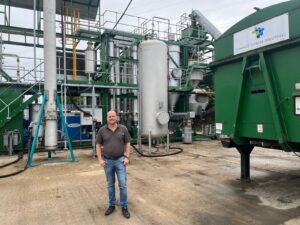Welsh firm produces “over 95% purity hydrogen” from waste-generated syngas

The company recently secured almost £4 million (€4.6 million) in government funding to make its biomass and waste-to-hydrogen plants even greener by using carbon capture.
Waste-to-energy processes rely on an advanced gasifier that turns waste into raw syngas and char, which is the first, hugely important step in the carbon capture process.
CSS has designed and built its own pressure swing adsorption (PSA) system to separate hydrogen from syngas, instead of relying on expensive third-party suppliers to the petrochemical sector.
The design is expected to evolve into a two-stage PSA process, with the intention of meeting the requirements of the waste-to-energy sector by keeping the operating pressure in the region of 3 barg (pressure in bars above atmospheric pressure) and to reach greater than 98% purity.
The syngas is a gas mixture containing hydrogen, carbon monoxide, carbon dioxide, methane, nitrogen, water vapour and bio-oils and trace contaminants. The bio-oils, water vapour and trace contaminants need to be removed to create a clean syngas.
After a number of gas clean-up stages, a well-known process known as Pressure Swing Adsorption (PSA) was used in two stages.
CSS built and demonstrated this process on a real syngas to be capable of producing greater than 95% purity hydrogen gas.
In these preliminary plant trials, the PSA process was demonstrated to work at even low operating pressures (1.5 barg), and with just a two-stage PSA process.
Further work is now planned at higher operating pressures to understand the balance between capital and operating costs in this particular waste-to-energy business setting and its scale of operation.
For many applications where hydrogen could be used to replace natural gas and fuel oils – for example in boilers, furnaces and diesel engines converted to run on hydrogen – 98% purity is adequate, said CSS.
In these circumstances, a very high purity of hydrogen (99.99%) is not necessary, and expensive to achieve, added the company.



















